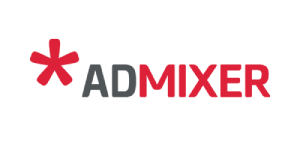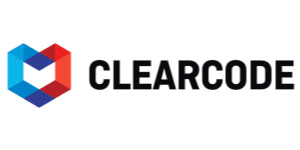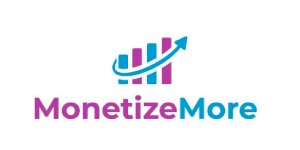2024 is here, having brought new waves of anticipation and optimism about the state of AdTech. From the overwhelming impact of artificial intelligence (AI) to the brand wars with ad blockers – this past year was saturated with events.
We’ve seen how trends emerged and died out, the power struggle between open web publishers and walled gardens, the incredible growth of certain media buying channels, and another delay of cookie execution.
Now it’s about time we talk about all of that and try to predict where the wind blows in 2024. Since five heads are better than one, we’ve invited our fellow industry experts for you to hear different perspectives. Without further ado, let’s get started.
The AI Hysteria
AI has been one of the hottest topics of 2023. As we are nearing 2024, what are your predictions for the role of artificial intelligence in digital advertising? Do you think its impact will grow, or will the hype die down eventually?
It’s hard to say something unique about artificial intelligence, as in 2023, it was literally everywhere, with ad tech not being an exception. We’ve seen how helpful machine learning and AI are for quite a while now, but this year just accelerated everything.
Lina Lugova, CMO at Epom
That’s why, no, I don’t think that the hype will die down.
Industry specialists have embraced AI and no longer imagine their work without it. From content writers making scratches in ChatGPT to designers taking inspiration from MidJourney, ad creation is now faster, easier, and more versatile than ever before.
I see AI continuing to play a transformative role in digital advertising as we approach 2024. Its impact is far from just hype; AI has become an essential tool for data analysis, ad optimization, and personalization.
Kean Graham, CEO at MonetizeMore
MonetizeMore’s award-winning AI-driven solutions adjust ad placements in real time based on user interaction, maximizing both ad effectiveness and revenue.
The Death of Third-Party Cookies
As Google postpones the departure of third-party (3P) cookies once again, do you think 2024 will finally be the first year of a cookieless world? More importantly, do you think that the advertisers are ready for that?
From the lack of cross-device tracking to user privacy issues, third-party cookies have become somewhat outdated a while ago. The problem is that they have been part of any advertiser’s arsenal for so long that now giving up on them is not an easy task. And Google understands that perfectly. That’s the reason why the company has postponed the departure of third-party cookies two times already. What’s worse is that there is no alternative that would be as versatile but didn’t have its own set of drawbacks. Most first-party data belongs to the world’s largest walled gardens, Universal IDs are still more of a concept than reality, and Google Topics hasn’t fully started working yet. That’s why it would be realistic to expect another delay in 2024. Despite that, things have definitely changed since 2021, and we see many marketers who have already found their perfect data alternative.
Lina Lugova, CMO at Epom
AI’s growth in our industry is more than just a trend; it’s a cornerstone in optimizing ad placements and enhancing user engagement for publishers. Even with rumors of Google potentially postponing the elimination of third-party cookies, publishers are steering towards a more privacy-conscious world. Adapting to these changes involves embracing first-party (1P) data and AI-driven contextual targeting, ensuring that publishers make more revenue while upholding user privacy and data integrity.
Kean Graham, CEO at MonetizeMore
The Complications in Metaverse Development
In 2022, everyone was hyped up about the metaverse. Industry experts predicted massive leaps in AR & VR tech development, but the revolution just didn’t happen. Will things change in 2024? How much?
When talking about advertising and AR & VR, it’s important to keep in mind that it’s not like other digital channels, such as display, in-app, and even CTV. Just because certain digital channels have experienced periods of rapid growth, such as in-app and retail media, doesn’t mean this growth rate will be replicated in others.
Firstly, it’s generally much harder to connect the AdTech ecosystem with the AR & VR environments compared to other channels. It’s not a simple ‘plug and play’ scenario; often, a software development kit (SDK) needs to be developed in order to connect the AdTech world with the AR & VR worlds.
Then there’s the issue of standards. If the AR apps or VR devices don’t use the same measurement standards, then it’s harder for advertisers to measure the performance of their campaigns. This causes advertisers to invest less of their ad budget.
Apart from the technical challenges, there’s also the potential size of the audience.
Even though the number of AR & VR users is increasing, the total potential audience size is dwarfed by those in other emerging digital channels, primarily retail media, and CTV. However, for brands that are looking to reach specific audiences, AR & VR advertising provides highly interactive and memorable experiences that are hard to emulate in other digital channels.
In 2024, we’ll likely see more investment and experimentation in AR & VR advertising, but I don’t think we’ll see exponential growth; it’ll likely be steady growth as the channel evolves and advances.
Michael Sweeny, Head of Marketing at Clearcode
The Change of Retail Media Networks
Honestly, I haven’t been keeping up with Metaverse & VR tech development. Instead, I will describe another big trend in the AdTech industry: retail media networks (RMN).
Retail and commerce media is the biggest transformation for the AdTech ecosystem in decades. We see many AdTech vendors shifting their focus from traditional publishers to retailers, marketplaces, and commercial inventory.
Historically, programmatic players have provided publishers, content creators, and app developers with monetization solutions. Now, they have suddenly become best friends with retailers and online marketplaces. The retail media revolution and the major industry growth have become possible thanks to AdTech infrastructure that has been time-tested by effective publisher monetization.
It’s an interesting trend, we see, that retailers are becoming new publishers building their own Walled Gardens on a rich 1st-party data foundation. I predict that 2024 retail/commerce media will become the new tide, lifting all advertising boats — AdTech companies and publishers included. It makes sense for the programmatic players – both on the demand and supply side – to tap into the retail industry, making lots of interesting first-party collaborations and powering omnichannel advertising for brands, agencies, and everyone on the demand side.
Sergii Tarnopolsky, Head of Content at AdMixer
Walled Gardens vs. Publishers
Walled gardens powered by big data and investments keep growing in size, but the open web publishers have found their niche audience and relevant advertisers, so they don’t back down either. What are your predictions for 2024? Will the balance shift to one side or the other?
I think Walled Gardens will continue taking over the supply landscape in 2024 for two reasons: Unique Supply (i.e., CTV providers) and Unique Data (i.e., Google). Obviously, privacy regulations and open identity depreciation have strengthened the walledgardenization process.
Historically, free access to user tracking has been the fuel driving the Open Web growth. But fraud, phishing, and poor SPO practices have stagnated the Open Web industry. In 2023, the Open Web has been short on Open ID solutions – and there’s no sign the situation will change next year.
The 1P data remains the key factor attracting dollars from ad budgets. No wonder many Tier 1 & 2 publishers have been keen on building their own walled gardens. The trend will continue until the ndustry finds an efficient User ID alternative – that will be clear and transparent to the end user.
So, I’m sure big publishers will continue making their 80%+ fill rates monetizing audiences at scale. But I worry about smaller-size publishers: although they have unique and niche audiences, they’re still not ready to manage their 1P data and sell inventory via direct paths.
Open Web is in trouble because the delivery of those targeted ads will be limited for smaller publishers.
Sergii Tarnopolsky, Head of Content at AdMixer
CTV/OTT Growth
As CTV/OTT has surpassed its cable counterpart, many industry experts foresee a positive future for this media-buying channel. Do you agree? Are there any particular challenges that can prevent CTV/OTT from further growth?
I believe the CTV/OTT advertising industry has a lot of upside potential, and there are many opportunities for all types of companies, including streaming services, AdTech companies, and brands.
For streaming services and media companies, advertising allows them to create a new high-margin revenue stream and increase subscriber numbers.
Netflix is a great example of this. In Q1 2022, Netflix reported that it lost 200,000 subscribers, representing a loss of subscribers for the first time in 10 years. Netflix then launched its ad-supported tier in November 2022, and one year on, it has seen 15 million subscribers join its ad-supported plan, beating Wall Street expectations.
While large streaming services like Netflix and Disney+ will attract the bulk of ad dollars from the world’s top brands, the growth and interest around CTV/OTT advertising will flow down to medium-sized streaming and media companies and allow them to connect with more brands.
This will not only allow brands to get their message in front of their target audience at scale but also allow medium-sized media companies to grow their advertising business.
Some of the main challenges that could hinder the growth of CTV/OTT advertising are a lack of measurement standards and ad fraud. These challenges are often present in new and emerging channels, but they represent opportunities for AdTech companies.
As technology will be a key facilitator and pillar of growth for CTV/OTT advertising, AdTech companies are well-positioned to solve these challenges and help the industry move forward.
Michael Sweeny, Head of Marketing at Clearcode
The Future of Ad Tech in 2024
As highlighted above, our beloved ad tech industry has many controversies, challenges, and local revolutions happening just as you are finishing this read.
From the obvious deprecation of third-party cookies to more peculiar trends within retail media, in 2024, we must be ready to face new difficulties, adapt to them, and change our ways for the better.
On behalf of all featured speakers in 2024, Epom wishes you to always stay on the edge of the industry to never be left behind. Stay innovative, stay smart, and stay strong. Happy New Year to all of you!
©2024 DK New Media, LLC, All rights reserved.
Originally Published on Martech Zone: 2024 Predictions: What’s Changed In AdTech And How Will It Impact Advertising This Year?




